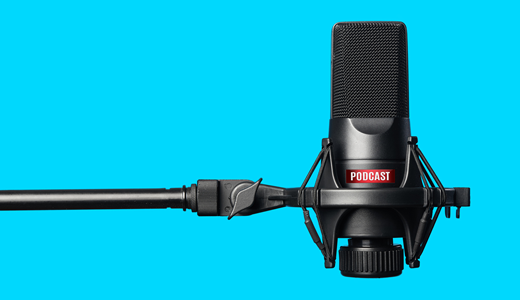They’re everywhere, those little white knobs that rest ever so gently in the ears. They used to have leashes, locked into mobile pocket computers. Now they are free, cordless earbuds unbound by the manacles of rubber and silicone.
With sales projected to skyrocket within the next couple of years, cordless earbuds have rapidly become the primary medium for whatever you like to listen to. Which begs the question…What are we listening to?
More often than not, it’s a podcast.
With more than 700,000 podcasts available through streaming services like Apple Podcasts, Google Podcasts, and Spotify, it’s no surprise how popular podcasts have become.
A quick search will show that over 70% of the U.S. population is familiar with the term “podcasting,” and over 50% has listened to a podcast. The primary demographic hovers around the 21-40 year-old age range, with smartphones being the driving force behind podcast availability and, frankly, their popularity. They, along with those omnipresent ear buds, make it incredibly convenient to listen to a podcast or two while on a run or driving to work.
Music MPH has charted the meteoric financial rise of podcasting and found that total revenue from podcasting has risen from $62 million to over $400 million in less than five years, with projections to skyrocket entering the next decade. (For more podcast by the numbers information check out this infographic created by Music MPH)
Podtrac analytics show that the most popular podcasts come from platforms like National Public Radio, The New York Times, This American Life, and ESPN. As news sources continue to adapt, podcasts continue to become a popular outlet for news media. A majority of these platforms offer shows like The Daily, Stuff You Should Know, and This American Life, which cover various forms of news, sports and media.
And that’s not even mentioning the podcast giant Serial. Breaking multiple podcast records with its release of Season 1 in 2014, Serial led the charge for what came to be known as a ‘podcast renaissance.’ Serial covered the relatively unknown true crime murder case of Hae Min Lee, digging into the handling of the case and how Adnan Syed, the convicted murderer, might actually be innocent.
As Serial continued to take the U.S. by storm, the Baltimore police force, which had investigated the case when it first broke in 1999–launched a new investigation into the case with new evidence and information that the podcast unearthed. Sparking a wave of true-crime podcasts, there have been several suggestions that Serial changed the way the public views criminal justice within the United States.
Another widely popular podcast, Freakonomics, inspired a few faithful listeners to instigate two new law changes in Hawaii. As the state reaps the benefits of individuals who now are incentivized through prize-rewarding personal savings accounts, it goes to show that you never know what might happen if you find yourself listening to a podcast.
But as informational and entertaining as these podcast can be, they come with a darker side. Research has shown that silence is beneficial to brain cell development. And as one journalist found out, having podcasts (or any type of noise) circulating through the brain for over 35 hours a week might not be the best thing in the world.
As the popularity of podcasts continues to rise, marketing teams around the world take notice. Podcasts have quickly become a hotbed for all sorts of subtle marketing schemes, leading The New Yorker to discuss the seductive and manipulative storytelling form that heavily populates podcasts.
It would be remiss of me not to mention everyone’s favorite generation in the same breath as podcasts. According to Forbes, Millennials lead the charts as the most avid podcast listeners. It’s partly due to the content these podcasts deliver, but a bigger factor may be the very nature of podcasts themselves. Podcasts are on-demand, efficient, allow for easy use, and provide deeper dives beyond simple headlines—all elements that Millennials tend to gravitate toward.
No wonder that, in an effort to reach younger generations, most megachurches offer podcast recordings of sermons or lessons. Some even produce their own specialized content directly for podcast services.
In the world of the live stream, some in the church have cited the negative effects that come with podcasting. Christianity Today says, “When pastors push their sermons far and wide via podcast, they unintentionally devalue the message they have worked hard to create and communicate. They remove the sermon from time, context, and body of the liturgy where it belongs.”
In strategizing for how to appeal to different demographics, Churches will continue to find the line that can and cannot be crossed when discussing sermon podcast production and digital distribution.
As platforms like Spotify and Apple Podcasts refine their production, the number of podcasts will only keep growing. And that means the variety will keep getting stranger. In the meantime, we can all hold out hope for more podcasts with humans personifying things like Coca-Cola cans and newspapers.






Recent Comments